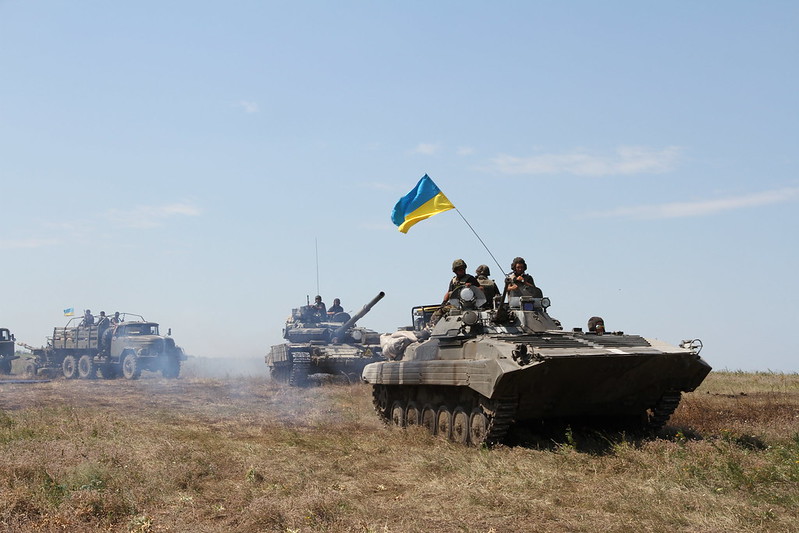A snapshot of recent news from sources around the world on the ongoing Russia-Ukraine war.

Political Developments
On Friday, Indian Prime Minister Narendra Modi arrived to Kyiv for a visit that, while officially focused on Ukraine-India bilateral relations, will likely touch on the war with Russian and India’s efforts to mediate an agreement between Moscow and Kyiv.
Putin’s delayed response to the Kursk attack might strain the loyalty of some of his supporters in Russia. The incident has drawn widespread attention and concern, and many are questioning the Kremlin’s apparent lack of urgency in addressing the situation.
Belarusian President Alexander Lukashenko said this week that Minsk has deployed around a third of its military towards border areas with Ukraine. Belarus has largely stayed out of the war involving its treaty ally Russia, but has allowed Russian troops to operate from Belarusian soil amid Russia’s ‘special military operation.’
Ukraine’s possible future admission into NATO does not depend on it restoring the pre-2014 borders, Czech President Petr Pavel told the newspaper Novinky a Právo in an interview this week. He cited the precedent of West Germany, which was admitted into NATO in 1955 despite the presence of Soviet troops in East Germany. Kyiv’s membership in the alliance has been a hotly-contested issue among the allies, particularly over concern that the alliance’s Article 5 mutual defense clause could be triggered should Ukraine be admitted amid its stand-off with Russia.
Military Assistance to Ukraine
Germany has halted the provision of new military aid to Ukraine, German media revealed this week, as Berlin works to rein in government spending. The freeze will affect new initiatives, not aid that has already been pledged. As it stands, Germany plans to provide EUR4 billion to Kyiv in 2025 — about half the level promised for 2024. The German government expects that the shortfall will be made up from using the proceeds of frozen Russian state assets, distributions of which are due to begin later this year.
The reports about the aid freeze prompted a firestorm in German politics. Commenting on the status of his country’s aid to Ukraine, German Chancellor Olaf Scholz stated, “Germany will not let up in its support for Ukraine. We will continue to support Ukraine for as long as necessary. And we will be Ukraine’s biggest national supporter in Europe.” German far-left politician Sahra Wagenknecht took a victory lap, stating her party’s hardline stance on Ukraine was a factor in pressuring the government to curtail aid.
After Ukrainian President Volodymyr Zelensky publicly mused that London’s support is weakening, a spokesman for British Prime Minister Keir Starmer told media that British support for Ukraine is “unwavering.”
On Monday, the Danish government announced a new military aid package to Kyiv worth $115 million. Details of the assistance package were not disclosed, but the funding will go towards procuring military equipment from either the Ukrainian defense industry or Ukraine’s international partners, according to media reports.
Washington, meanwhile, is preparing another set of military assistance to Ukraine including HIMARS ammunition, air-defense missiles, and anti-tank weapons. U.S. officials told media on Thursday that the new aid package is worth about $125 million.
Though not included in this latest aid package, the Biden administration is still considering the possible delivery of long-range cruise missiles to Ukraine known as the Joint Air-to-Surface Standoff Missile (JASSM). These missiles would equip Kyiv’s F-16s, providing greater firepower and reach of these combat aircraft.
Battlefield Updates
Ukraine’s offensive into Kursk continues, even as Russia begins to mount a response, with Ukrainian troops now controlling a significant portion of the Kursk region. The Ukrainian military has successfully destroyed bridges inside Russia using Western-provided HIMARS, hampering the movement of Russian troops and supplies, but the use of Western-supplied weapons has drawn concern that Kyiv’s partners may put pressure on the operation. President Zelensky addressed the offensive this week, stating that its intent is to create a “buffer zone” to guard against Russian attacks on Sumy, which sits opposite Kursk.
The Russian government has cycled some soldiers from the frontlines in eastern Ukraine towards the battle in Kursk, but left many of its best units on the offensive towards key cities like Pokrovsk. By launching counterattacks on Russian soil, Ukraine has thrust young Russian conscripts, many of whom did not volunteer for active combat, directly into the line of fire. Reports indicate that Kyiv’s forces have captured hundreds of these conscripts as prisoners of war.
Russia’s forces have also taken prisoners, announcing the capture of 19 Ukrainian “saboteurs” on Monday.
Russia continues to advance towards Pokrovsk, aiming to complete its capture of Donetsk. On Wednesday, the Russian Ministry of Defense said that it had captured the town of Zhelanne, located about 20 kilometers east of Pokrovsk. Ukrainian officials this week stated that civilians likely have no more than two weeks to evacuate Pokrovsk.
As the ground battle rages, Ukraine attempted to conduct a drone attack on Moscow this week. Russia called it the largest-ever bombardment on the capital city since the start of the war with Ukraine. Russian officials claimed, however, that local air defense systems downed all drones threatening the city. The Ukrainian military also attacked Russia’s Marinovka airfield in Volgograd. Reports claim the attack left the air base’s fuel storage site in flames. In addition, warehouses filled with Russian-made glide bombs was also attacked.
Ukrainian operations also targeted occupied Crimea this week. On Friday, Ukraine said it sank a ferry that had been used to transport weapons and supplies to Russian troops on the peninsula.
Russia launched another missile and drone attack on Ukraine. Russian forces fired two ballistic missiles, either Iskander-Ms or North Korean-made KN-23s, as well as a single Iskander-K cruise and two Kh-59 guided missiles. In addition, 26 Shahed attack drones were launched during the night of August 19-20.
The Ukrainian government has announced that Russia has fired nearly 14,000 attack drones and more than 9,600 missiles since the start of the war. Moscow invaded Ukraine on February 24, 2022. To help protect its equipment, the Ukrainian military has deployed a wide range of ground-based decoys to confuse its Russian opponents. Recently, Russia released a video showing the destruction of a Ukrainian-operated M270 MLRS by an Iskander theater ballistic missile. However, it turns out, this was a Ukrainian decoy.
For 50 years, Forecast International intelligence reports have been the aerospace and defense industry standard for accurate research, analysis, and projections. Our experienced analysts compile, evaluate, and present accurate data for decision makers. FI's market research reports offer concise analysis of individual programs and identify market opportunities. Each report includes a program overview, detailed statistics, recent developments and a competitive analysis, culminating in production forecasts spanning 10 or 15 years. Let our market intelligence reports be a key part of reducing uncertainties and mastering your specific market and its growth potential. Find out more at www.forecastinternational.com



